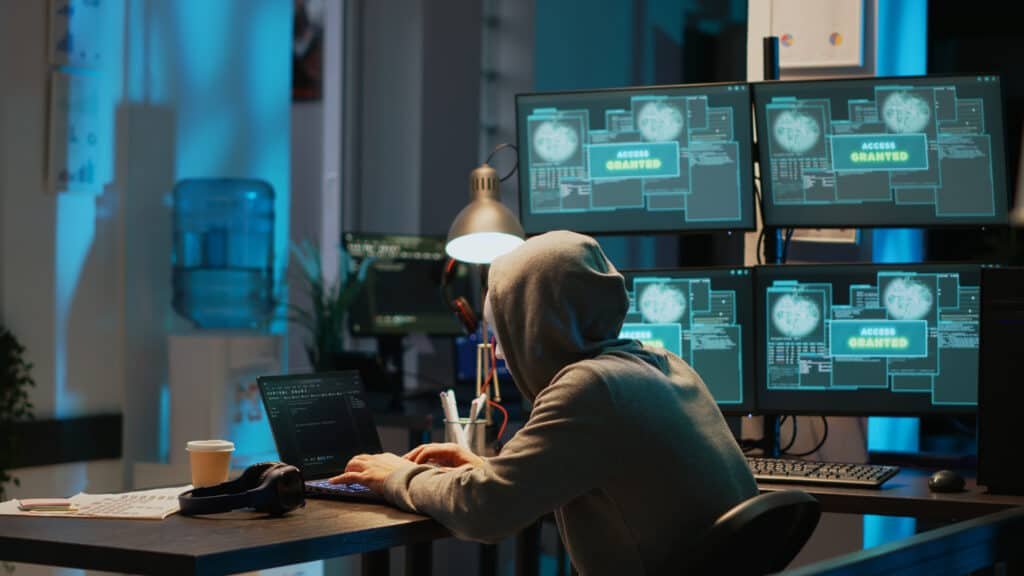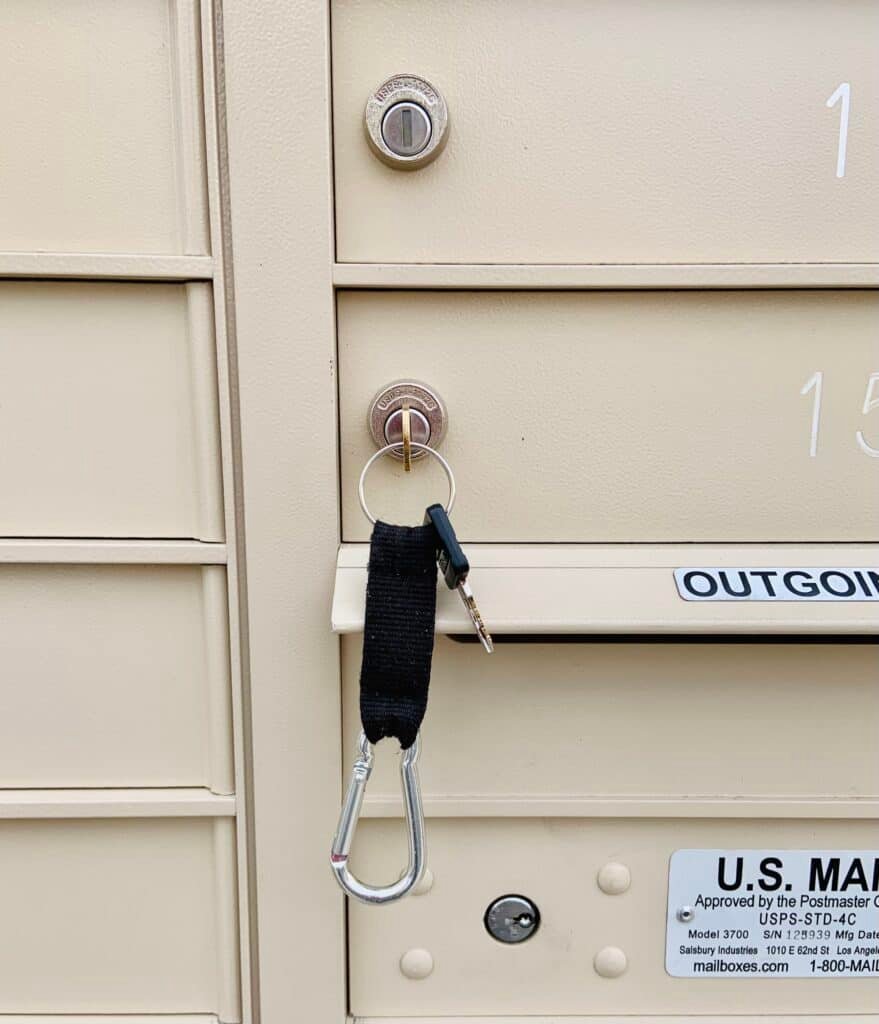Letterboxed Scam

We may earn a small fee from the companies mentioned in this post.
Protect your mail and learn how to fight back against letterboxed scams
Are you doing enough to protect your mail and personal information from a letterboxed scam? These scams are on the rise, and the consequences can be severe, impacting your finances, credit rating, and even subjecting you to criminal prosecution. In this blog post we will help you learn how to identify and respond to letterboxed scams, secure your mail, and protect your identity from being stolen by fraudsters.
We will discuss the importance of understanding how fake letterboxes work, the impact of identity fraud, and Royal Mail’s role in mail protection. Additionally, we will cover the steps to monitor your contact details and the benefits of CIFAS Protection Registration. Let’s dive into the world of “letterboxed scams: protect your mail and learn how to fight back” and learn how to safeguard our personal information from these threats.
Short summary
Letterboxed scams involve fraudsters installing fake letterboxes to steal mail and personal and financial information
Taking proactive steps such as monitoring your contact details, registering with CIFAS Protection and investing in secure mail solutions can help protect against identity theft
Staying informed about potential scams is essential for preventing future frauds
Contacting your local police force or agency
Understanding letterboxed scams

A letterboxed scam involves fraudsters installing fake letterboxes on residential premises to collect mail and personal information, ultimately leading to identity theft. The stolen data can be used to open unauthorised lines of credit in the name of the innocent resident, resulting in financial loss and a damaged credit rating.
These scams are becoming increasingly prevalent, and it’s essential to be aware of the risks and potential consequences. By understanding how fake letterboxes work and the impact of identity fraud, you can take action to secure your mail and protect your personal information from falling into the wrong hands.
How fake letterboxes work
Fake letterboxes are cleverly designed devices used by criminals outside residences to collect mail containing financial information and other confidential data. They typically feature a drawer with a false bottom fitted with flaps that open to collect the mail. Fraudsters can then periodically remove the collected mail and use it to commit identity fraud.
In some cases, criminals gain access to blocks of flats and steal mail from communal letterboxes that may be broken or unlocked, or from a pile near the entrance door. Knowing how these fake letterboxes work is crucial for recognising and preventing letterboxed scams, which can have severe repercussions for the victim.
Checkout our informative article on Royal Mail scams
The impact of identity fraud
Identity fraud occurs when an individual’s personal information is used without authorization to commit a criminal act, deceive, or take advantage of the individual. The consequences can be far-reaching, affecting a person’s finances, credit rating, and even subjecting them to criminal prosecution.
Letterboxed scams can result in various lines of credit being opened with financial providers under the identity of the unwitting resident. Locations such as Manchester, Twickenham, Harrow, and Bromley have been identified as having the highest occurrences of mail theft fraud.
Understanding the impact of identity fraud is vital for taking appropriate measures to secure your mail and personal information.
Read our blog on what to do if you become a victim of Identity Theft
Securing your mail and personal information

As letterboxed scams continue to rise, it is critical to secure your mail and personal information from potential threats. Royal Mail plays a significant role in mail protection, implementing policies and procedures to ensure the security and safety of their customers’ mail.
It is also essential to report any instances of theft or suspicious activity related to letterboxed scams to the proper authorities. By staying vigilant and taking appropriate action, you can protect yourself from the devastating consequences of identity fraud.
Royal Mail’s Role in Mail Protection
Royal Mail has a responsibility to minimize the risk of loss, theft, damage, and interference to mail. To fulfill this obligation, the organization has established policies and procedures that guarantee mail is protected from unauthorized access and other threats.
By understanding Royal Mail’s role in mail protection, you can better appreciate the importance of their regulations and practices in ensuring mail security. This knowledge can empower you to take additional steps to secure your mail and protect your personal information from letterboxed scams.
Reporting Theft and Suspicious Activity
In the event of mail theft or suspicious activity related to letterboxed scams, it is crucial to report these incidents promptly. The procedure for reporting theft includes calling the police during emergencies, reporting online, or contacting Crimestoppers anonymously.
Additionally, suspected letterboxed scams should be reported to the police, local Trading Standards office, Royal Mail, and Action Fraud. By reporting theft and suspicious activity, you contribute to the prevention of letterboxed scams and help protect others from falling victim to identity fraud.
Protecting yourself from identity fraud

Taking proactive steps to protect yourself from identity fraud is essential in today’s world, where scammers are constantly devising new ways to steal personal information. Monitoring your contact details and considering registering with CIFAS Protection can provide an extra layer of security.
By staying vigilant and taking the necessary precautions, you can significantly reduce the risk of becoming a victim of identity fraud and ensure the safety of your personal information.
Monitoring Your Contact Details
Keeping your contact details accurate and secure is essential for guarding against identity fraud. To monitor your contact details, regularly review your credit report for unusual activity and ensure your information is up-to-date with companies you do business with.
In case your contact details have been compromised, contact the relevant companies and organizations to inform them of the breach and take necessary steps to safeguard your identity. By monitoring your contact details, you can prevent unauthorized access to your personal information and protect yourself from potential scams.
CIFAS Protection Registration
CIFAS Protection Registration is a service that enables individuals at heightened risk of identity theft to register their personal information with CIFAS, a UK-based fraud prevention service. This service offers protection from identity fraud and other types of fraud by prompting CIFAS members to conduct additional verifications to validate your identity and prevent potential fraud.
By registering with CIFAS Protection, you can enhance the security of your personal information and reduce the risk of falling victim to identity fraud. It’s an additional layer of protection that can make a significant difference in safeguarding your personal information from letterboxed scams.
Check out our latest blog on protecting yourself from HMRC scams
Recognising and responding to letterboxed scams

Knowing how to recognise and respond to letterboxed scams is crucial for protecting your mail and personal information. By learning to identify fake letterboxes and taking appropriate action if you suspect a scam, you can prevent fraudsters from using your identity for their criminal activities.
In this section, we will discuss the steps to identify potential fake letterboxes and the actions to take if you suspect a scam. Armed with this knowledge, you can confidently secure your mail and prevent identity fraud.
Identifying Fake Letter boxes

Spotting fake letter boxes can be challenging, but there are some tell-tale signs to look for. Check for indications of tampering, such as broken locks, evidence of forced entry, or glue residue near the mailbox. If you receive mail addressed to someone other than yourself, it may also indicate the presence of fake letter boxes.
By becoming familiar with the signs of fake letterboxes, you can take proactive steps to protect your mail and personal information from letterboxed scams. Report suspicious activity or evidence of tampering immediately to the authorities to help prevent further incidents.
What to Do if You Suspect a Scam
If you suspect a letterboxed scam, it is important to take immediate action. First, contact the police by dialling either 101 or 999, depending on the urgency of the situation. Next, inform your bank or credit card provider of any suspicious activity to ensure your financial accounts are secure.
Additionally, review your credit report for any unexpected transactions and consider registering with CIFAS Protection to further safeguard your identity. By taking these steps, you can minimise the impact of a letterboxed scam and protect your personal information from identity fraud.
Royal Mail (UK)
The Royal Mail, as the UK’s primary postal service, takes the issue of letterbox scams very seriously. They’ve committed to combating scams and protecting their customers from fraudulent activities.
Steps Taken by Royal Mail Against Scams
Scam Mail Team: Royal Mail has a dedicated Scam Mail team that works diligently to identify and take action against fraudulent mail. They continually improve their methods to detect scam mail, acting upon customer reports and coordinating with law enforcement and regulatory bodies.
Information and Awareness: Royal Mail regularly provides information and tips on how to recognize scams on its website and through other communication channels. They actively contribute to raising public awareness about scams.
Reporting Mechanism: Royal Mail has established a reporting mechanism for customers to inform them of any suspicious mail. This includes an online form, a dedicated phone line, and an email address for scam-related queries.
Reporting Letterbox Scams to Royal Mail
If you suspect you’ve been targeted by a letterbox scam, report it to the Royal Mail’s Scam Mail team. You can do this via their online form, by emailing scam.mail@royalmail.com, or by calling 0800 011 3466. You may also write to them at Freepost Scam Mail, PO Box 797, Exeter EX1 9UN.
When reporting, provide as much detail as possible about the scam, including copies or pictures of the letter, envelope, and any other relevant items. Royal Mail uses these details to investigate the source and, where possible, stop the delivery of scam mail.
How Royal Mail Handles Scam Reports: Upon receiving a report, Royal Mail will log your details and commence an investigation. They might stop the scam mail from being delivered, if it’s within their control, and may also pass on the details to law enforcement agencies for further action. Note that they cannot take action on scam mail originating from overseas, as it falls outside their jurisdiction.
Staying Safe with Royal Mail: While Royal Mail plays a significant role in preventing scams, it’s also essential to stay vigilant. Use the resources and information provided by Royal Mail to protect yourself from scams, and ensure you report any suspicious mail to help in the fight against fraudulent activities.
Checkout our informative blogpost on Vinted online chat – Get the tips and latest advice
Preventing Future Scams
Investing in secure mail solutions and staying informed about scams is essential for preventing future letterboxed scams and other types of fraud. By taking a proactive approach to securing your mail and personal information, you can minimize the risk of identity fraud and enjoy peace of mind.
In this section, we will discuss the benefits of secure mail solutions and the importance of staying informed about scams. With this knowledge, you will be better equipped to protect yourself and others from the devastating consequences of letterboxed scams.
Secure Mail Solutions

Various secure mail solutions, such as ProtonMail, Tutanota, Mailfence, Posteo, and Zoho Mail, offer end-to-end encryption and other security features to protect against phishing attacks and other email-borne threats. Utilising a secure mail solution can help safeguard your personal information from unauthorized access and potential scams.
To maximize the security of your email account, employ a robust password, two-factor authentication, and exercise caution when using devices to access your email. By following these best practices, you can significantly reduce the risk of falling victim to letterboxed scams and other types of fraud.
Staying Informed about Scams
Staying informed about scams is crucial for protecting yourself and others from the harmful consequences of letterboxed scams and other types of fraud. To stay abreast of scams, read up on the latest scams, sign up for scam alerts, and follow reliable sources of information on social media.
There are multiple resources available for staying informed regarding scams, such as government websites, consumer protection organizations, and online forums. By staying informed and taking proactive measures, you can prevent future scams and protect yourself, your family, and your community from the detrimental effects of letterboxed scams.
Reporting to Action Fraud (UK)
It’s essential to report any suspected scams to Action Fraud, the UK’s national fraud and cybercrime reporting centre. By doing so, you’re not only helping yourself but also contributing to a broader effort to track and combat these malicious activities.
How to Report a Letterbox Scam to Action Fraud
Gather Your Information: Before reporting the scam, gather all relevant information. This includes the scam letter itself, envelopes, any other accompanying documents, and details of any interaction you may have had with the scammers.
Online Reporting: Visit the Action Fraud website and click on “Report Fraud.” You’ll be guided through a series of questions about the scam, during which you can provide the information you gathered. This process includes providing personal details, a summary of what happened, information about the scammer if available, and any financial loss you’ve incurred.
Telephone Reporting: If you’re not comfortable reporting online, you can also report the scam by calling Action Fraud at 0300 123 2040. Ensure you have your information ready as they will ask for similar details.
After Reporting the Scam
Once you’ve reported the scam to Action Fraud, you’ll receive a police crime reference number. Action Fraud will analyse your report and, if appropriate, pass it to the National Fraud Intelligence Bureau for further investigation. Keep in mind, though, that receiving a crime reference number does not necessarily mean that individual investigations will occur; this depends on the scam’s severity and whether there are viable leads to pursue.
Importance of Staying Vigilant
Reporting the scam to Action Fraud does not guarantee that you won’t be targeted again. Always remain vigilant, and remember to warn your friends, family, and neighbours about the risks of letterbox scams. With increased awareness and swift reporting, we can contribute to the fight against these fraudulent practices.
CIFAS
CIFAS, or the Credit Industry Fraud Avoidance System, is a UK-based fraud prevention agency that works to protect individuals and businesses from financial fraud. Reporting a letterbox scam to CIFAS is vital for several reasons:
Prevention of Identity Theft: One of the main purposes of CIFAS is to prevent identity fraud. If you’ve fallen victim to a scam where your personal information might have been compromised, reporting it to CIFAS allows them to flag this in their system. This can prevent criminals from successfully applying for credit or services using your identity.
Supporting Broader Efforts Against Fraud: Reporting scams to CIFAS helps in the wider fight against fraud. Your report adds to the overall data on fraud, aiding in the creation of strategies to combat these crimes more effectively.
Aiding Investigation: By sharing details of the scam, you might provide vital information that could aid in investigating and potentially bringing the fraudsters to justice.
Raising Awareness: Reporting scams can help raise awareness about the different types of fraud. CIFAS shares information about emerging threats and trends with its members, the public, and other interested parties. Your report can contribute to this and potentially prevent others from falling victim to similar scams.
To report a scam to CIFAS, you should contact them directly through their official website or phone number, providing as much detail as possible about the incident. Note that CIFAS itself cannot investigate individual cases or recover lost funds, but the information you provide can contribute significantly to fraud prevention efforts.
Conclusion
In this blog post, we have discussed the importance of understanding letterboxed scams, securing your mail and personal information, and protecting yourself from identity fraud. By learning to identify fake letterboxes, reporting theft and suspicious activity, and utilising secure mail solutions, you can effectively combat letterboxed scams and safeguard your personal information from fraudsters.
We hope this information has provided you with the knowledge and tools necessary to protect yourself from letterboxed scams and other types of fraud. Remember, staying informed, vigilant, and proactive is the key to preventing identity fraud and ensuring the safety of your mail and personal information. Together, we can make a difference in the fight against letterboxed scams and build a safer future for all.
Frequently Asked Questions
What to do if a scammer has your address UK?
It is important to take swift and decisive action if you suspect a scammer has your address. Report the scam to Action Fraud as soon as possible and get a crime reference number. Contact CIFAS to apply for a protective registration, and report any theft of personal documents or suspicious credit applications to the police.
Taking this immediate action will help protect you from fraud in the future.
How do I report a scammer online – Local police force?
If you come across a scammer, it is best to report them to the relevant authorities. You can do this by filing a complaint with your local police force or consumer protection agency. Note: remember to request a crime reference number when reporting the incident to your local police force
Additionally, you can report any online ads for the scammer to the Advertising Standards Authority (ASA). They may take action against the advertisement and/or the person behind it
Useful Links
National Cyber Security Centre
With over three decades of experience in the heart of London’s financial sector, I have dedicated my career to the pursuit of robust cybersecurity practices and IT leadership. As a Certified Information Systems Security Professional (CISSP), Certified Information Security Manager (CISM), Certified Chief Information Security Officer (C|CISO), Certified Ethical Hacker (CEH), and Computer Hacking Forensic Investigator (CHFI), I bring a wealth of knowledge and expertise to the table.
My journey in the field of cybersecurity has not only been about personal growth but also about sharing my insights with others. As an international speaker, I have had the privilege of addressing audiences worldwide, discussing the importance of cybersecurity in today’s digital age. My passion for knowledge sharing extends to my work as an author and blogger, where I delve into the complexities of cybersecurity, offering practical advice and thought leadership.
In my role as a CISO and Head of IT, I have overseen the development and implementation of comprehensive information security and IT strategies. My focus has always been on creating resilient systems capable of withstanding the evolving landscape of cyber threats.
My Master’s degree in Cybersecurity has provided a solid academic foundation, which, when combined with my practical experience, allows me to approach cybersecurity from a holistic perspective.
I am always open to connecting with other professionals in the field, sharing knowledge, and exploring new opportunities. Let’s secure the digital world together.

